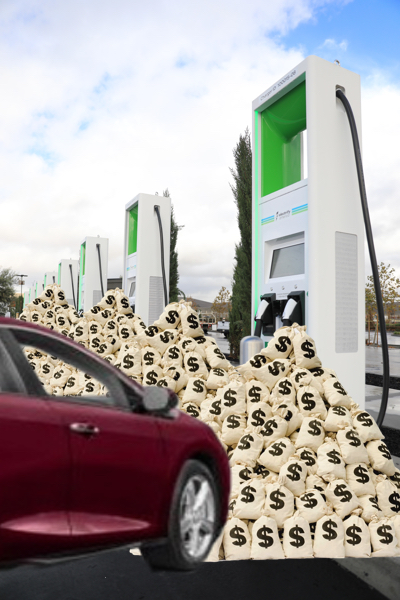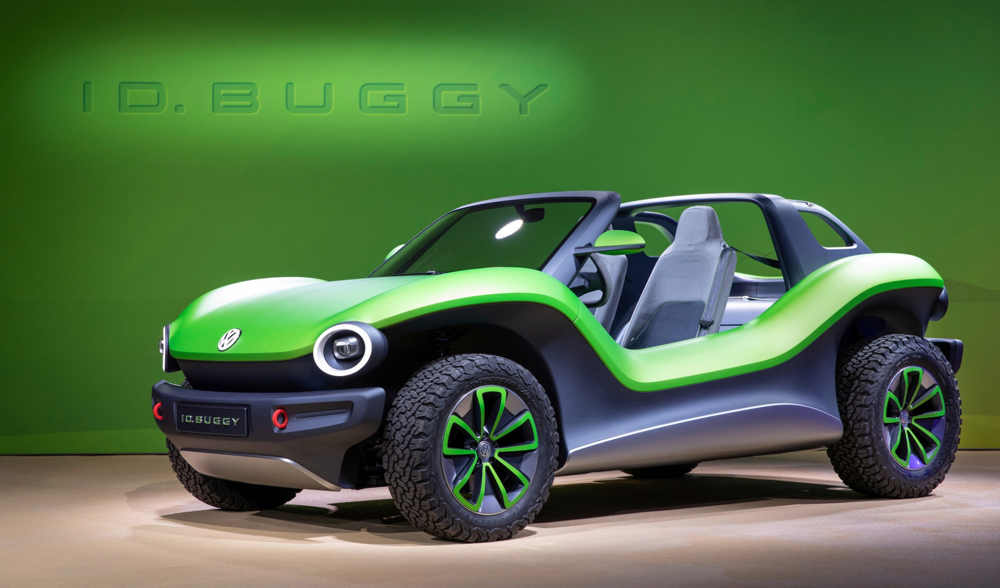Mark Reuss, President of General Motors recently wrote an op-ed for CNN, in which he listed the three things that have to change for electric vehicles to go mainstream. I disagree with him and here’s why.
The three things holding back adoption of EVs, according to Reuss, are range, charging infrastructure (or the lack of it) and cost. Actually, the one thing holding back EVs is the lack of consumer education and the untimely (declared) death of the plug-in hybrid.
Range
According to CarInsurance.com, the average American drives less than 40 miles per day. In fact, the state with the highest miles driven per year (Wyoming) show an average daily drive of just under 60 miles. Unfortunately, this is a fact of which most American drivers are unaware. I see this every day, when I ask a potential automobile lease client how many miles a year they need on their lease. Many people have absolutely no idea how much (or how little) they drive. Many plug-in hybrids easily handle this range, including the Chevy Volt, which was discontinued this year by GM. If only GM had hammered this point home, many more people would have discovered this vehicle and be driving almost exclusively electric today, with the ability to drive across country, should the need arise. I’ve driven the Volt since August 3, 2012 and am almost 100% electric, in my driving. So technology that solves this primary adoption concern was discontinued by GM in February of this year.
Many of us have to travel long distances occasionally. The lack of charging infrastructure makes this a daunting challenge to the uninformed. Why? In the U.S., according to Statista.com, the average number of vehicles per household is 1.88. The 2nd vehicle (for most Americans) could be a traditional, internal combustion powered vehicle, allowing traditional freedom for those times when one has to drive cross-country and amazing savings every other day of the year. Let’s be very honest here. How many times, per year, do you drive more than 250 miles in one sitting? Why not have one or two EVs/hybrids and just rent a large vehicle, when necessary? Or better yet, why not bring back the Voltec drivetrain specifically for long distance driving? (more on this later…)
Charging Infrastructure
The lack of charging infrastructure is always touted as an impediment to EV adoption. The fact is, most people will charge at home, while they sleep. In 7+ years of driving a plug-in hybrid, I have plugged into public chargers only a handful of times, mostly out of curiosity. That being said, there is one group definitely affected by the lack of charging infrastructure: those who reside in multi-family dwellings and have no place to charge at home. EV range has gotten to the point that people in this circumstance can begin to think of recharging an EV like refueling a gasoline-powered car. If your average commute is 40 miles per day and your vehicle can go 240 miles on a charge, you can go 5 or 6 days between charging, much like a gas-powered car does between refuelings. I usually try to dissuade people from thinking of recharging as being the same as refueling, because of the advantages of home charging while you sleep. In my opinion, chargers are needed at home (if possible), at work, along the interstates for longer trips and possibly the most important, in large clusters near areas dominated by multi-family dwellings. We will need to develop a valet system or the ability to plug in multiple vehicles simultaneously, while charging them sequentially, in order to not have to physically move vehicles around, to free up chargers.
Cost
The early adopter stage of the migration to electric transportation is coming to an end. Many early adopters, like me, were willing to pay a premium to move into electric vehicles faster. The vast majority of people will need to see that they aren’t paying anything extra. They want the low fuel cost as well as an equivalently priced vehicle. We are almost already there. When comparing total cost of monthly ownership, the tax incentives, maintenance and fuel savings, as well as manufacturer incentives make driving an EV an affordable option for most drivers. If we tweaked the tax incentives and made them point-of-sale incentives, many more people would take the plunge. Many people who desperately want an EV are frozen out due to being unable to qualify for a $45K can note, when they could easily qualify for a $35K car note, if the government incentives reduced the drive-out price instead of coming weeks (or months) later. Speaking of price points, how much do you expect a large, electric SUV to cost? To drive across Texas and handle the weight of a vehicle capable of taking 7 or 8 people to grandma’s house, a very large battery pack will be required. However, if the Voltec drivetrain were resurrected, perhaps this could be done at a lower price point, making plug-in vehicles a no-brainer for commuting and eliminating the range anxiety that has people afraid to take the plunge.
What is really lacking?
All these issues come down to one thing that really is the major impediment to EV adoption: Consumer education. This is where the OEMs dropped the ball. I’m just starting to see television commercials touting electric offerings from (some) manufacturers. This is something that the consumer should not have to research. Trying to find answers on the Internet is like trying to navigate a minefield. There are plenty of groups out there that want to sway public opinion away from electrics. They have a vested financial interest in the status quo. The EV advantage is something that should be presented often, in every media form available today. When we educate consumers, they will come to understand that, for the vast majority of us, there are huge advantages available to those who drive plug-in vehicles, today.




Buzz Smith great article, Buzz! Spot on about (premature) “death” of the PHEV, almost just when it’s most needed to cross The Chasm (adoption curve).
As for consumer education about EVs, it is still very important, and for the better part of the past decade I would have agreed with you on it being the #1 top EV adoption barrier.
I’ve since come to realize that EV education is a close #2 (or actually #4) as interrelated almost into one are the actual 3 top barriers, IMO which are all SUPPLY related:
1. Plug-in brand/model existence (includes missing PHEVs issue)
2. Nationwide availability (as in the travel provision/CA issue)
3. Dealer inventory (as in utter lack thereof, also instrically linked to education as neither consumers nor sales staff can gain experience & knowledge, much less enthusiasm for vehicles that simply aren’t there)
Now, what are we going to do about it?? #rEVolution
Mark,
The main reason for low inventory, outside the CARB states, seems to be the existence of ZEV credits. I know I have been unable to get inventory at times when I had customers begging to get plug-in vehicles, because inventory was being diverted to CARB states so that General Motors could earn ZEV credits. Although I disagree strongly with the current administration on environmental policy, the ending of California’s ability to set their own pollution standards, would probably even out distribution of inventory, allowing those of us between the coasts to easily experience plug-in bliss. We would just have to hope that, based on public sentiment, that the manufacturers would move to cleaner vehicles to reap the rewards of the years of R&D forced by CARB rules.